Key Takeaways
- Understanding the impact of colors on fashion choices.
- How to select the right colors for different occasions.
- The psychology behind color preferences.
- Tips on pairing colors effectively.
- The cultural significance of colors in clothing.
- How colors influence perception and mood.
- Seasonal color trends and how to use them.
- Practical advice for building a versatile and stylish wardrobe.
When I was a child, my grandmother would tell me stories about how she used to sew colorful garments for her friends and family. She had an uncanny knack for pairing hues that would leave everyone in awe. “Colors,” she would say, “are the language of the soul.”
These words stuck with me, and as I grew older, I began to see the truth in them. The colors we choose to wear can communicate our moods, intentions, and even our personalities. They are powerful tools in the art of self-expression. In this guide, I’ll walk you through the fascinating world of colors in clothing, providing insights and tips that will help you make informed choices and express yourself with confidence.

The Power of Colors in Fashion
Colors have always held a significant role in the world of fashion. The right color palette can transform any outfit, influence first impressions, and even impact your mood. By understanding the power of color in fashion, you can make smarter style choices that reflect your personal fashion sense and effectively communicate the message you want to send through your clothing.
The Psychology of Colors
Colors play a powerful role in fashion by evoking emotions and influencing behavior. For instance, the color red is commonly associated with passion, excitement, and high energy, while blue is often linked to calmness, trust, and stability. When selecting colors for your wardrobe or outfits, it’s important to consider the psychological effects different hues can have. Wearing a red dress to a party can boost your confidence and help you appear more outgoing, while choosing a blue suit for a business meeting can project professionalism and reliability. By understanding color psychology in fashion, you can make more intentional choices that enhance your personal style and presence.
Cultural Significance of Colors
Colors hold different meanings across cultures, making color symbolism an important aspect of cultural traditions and customs. For example, in many Western cultures, white is traditionally worn at weddings to represent purity, but in some Eastern cultures, white is associated with mourning and funerals. Understanding these cultural color meanings can help you select appropriate colors for various occasions and cultural settings. For instance, wearing red during Chinese New Year is considered highly auspicious, as red symbolizes good fortune, happiness, and prosperity in Chinese culture.
Seasonal Color Trends
Fashion trends evolve with the seasons, and color trends are no exception in the world of style. During spring, popular colors often include soft pastel shades, while autumn fashion typically highlights warm, earthy tones. Staying updated on seasonal color trends is a great way to keep your wardrobe fashionable and on-trend. For instance, you could wear a mint green dress to a spring garden party or opt for a burnt orange sweater for a cozy fall outing, embracing the latest seasonal fashion colors.
Choosing the Right Colors for Your Skin Tone
One of the keys to looking great in your clothes is choosing colors that complement your skin tone. Understanding your skin tone and how different colors interact with it can help you select outfits that enhance your natural beauty.
Identifying Your Skin Tone
Skin tones are generally categorized into three types: warm, cool, and neutral. Warm skin tones have yellow or golden undertones, cool skin tones have pink or blue undertones, and neutral skin tones are a mix of both. To identify your skin tone, look at the veins on your wrist. If they appear greenish, you likely have a warm skin tone. If they look bluish, you have a cool skin tone. If you can’t tell, you might have a neutral skin tone.
Best Colors for Warm Skin Tones
If you have a warm skin tone, colors like earthy browns, golden yellows, olive greens, and warm reds will look great on you. These colors will enhance your natural warmth and give you a radiant glow. For example, try wearing a mustard yellow blouse or a terracotta dress to bring out the golden undertones in your skin.
Best Colors for Cool Skin Tones
For cool skin tones, jewel tones like sapphire blue, emerald green, and royal purple are flattering. These colors will complement the cool undertones in your skin and create a striking contrast. A cobalt blue sweater or a deep purple scarf can add a pop of color to your wardrobe and highlight your cool complexion.
Best Colors for Neutral Skin Tones
If you have a neutral skin tone, you’re in luck – most colors will look good on you! You can experiment with a wide range of hues, from pastels to vibrant shades. For instance, a blush pink dress or a mint green top can be great additions to your wardrobe, allowing you to play with different styles and colors.
Pairing Colors Effectively
Knowing how to pair colors effectively is essential for creating stylish and cohesive outfits. By understanding color theory and the relationships between different hues, you can put together ensembles that are visually appealing and balanced.
Understanding the Color Wheel
The color wheel is a useful tool for understanding the relationships between colors. It consists of primary colors (red, blue, yellow), secondary colors (green, orange, purple), and tertiary colors (a mix of primary and secondary colors). By using the color wheel, you can create harmonious color combinations that enhance your outfits.
Complementary Colors
Complementary colors are opposite each other on the color wheel, such as red and green or blue and orange. When paired together, they create a vibrant and dynamic look. For example, you might pair a royal blue dress with a burnt orange belt for a bold and stylish outfit.
Analogous Colors
Analogous colors are next to each other on the color wheel, such as blue, green, and turquoise. These colors create a harmonious and cohesive look when worn together. An outfit combining a teal blouse, a mint green skirt, and a navy blue jacket can be both elegant and visually pleasing.
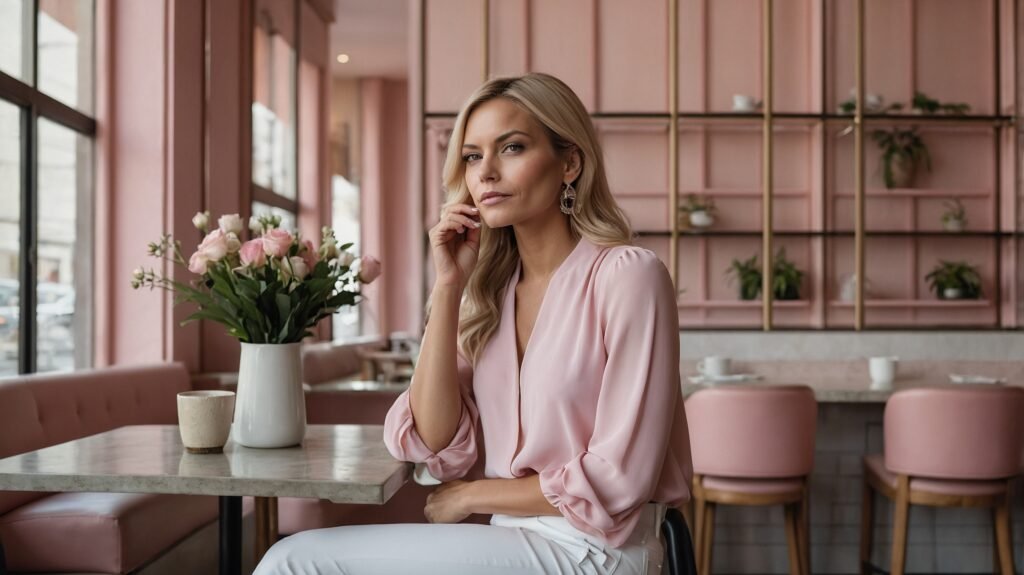
Building a Versatile Wardrobe with Color
Creating a versatile wardrobe that allows you to mix and match different pieces is essential for making the most of your clothing. By strategically choosing colors that complement each other, you can build a wardrobe that is both functional and stylish.
The Importance of Neutral Colors
Neutral colors like black, white, gray, beige, and navy are essential for any wardrobe. They can be paired with almost any other color and serve as the foundation for many outfits. For example, a black blazer can be worn with a variety of tops and pants, making it a versatile and essential piece.
Adding Pops of Color
While neutrals are important, adding pops of color can make your outfits more interesting and dynamic. Choose a few key pieces in bold colors that you love and incorporate them into your wardrobe. For instance, a red coat or a yellow handbag can add a touch of excitement to an otherwise neutral outfit.
Seasonal Swaps
As the seasons change, so should your wardrobe. Swap out heavier, darker colors for lighter, brighter ones as the weather warms up, and vice versa. This will keep your wardrobe fresh and ensure that you always have appropriate clothing for the season. For example, replace a heavy black wool coat with a light pastel trench coat in the spring.
The Cultural Significance of Colors
Colors hold different meanings and significance in various cultures around the world. Understanding these cultural connotations can help you make thoughtful choices when selecting your clothing.
Colors in Western Culture
In Western cultures, colors often have specific associations. White is typically worn at weddings to symbolize purity, while black is worn at funerals to signify mourning. Red is seen as a color of passion and love, often worn on romantic occasions. Knowing these associations can help you choose colors that are appropriate for different events and settings.
Colors in Eastern Culture
In many Eastern cultures, colors have different meanings. For example, in China, red is considered lucky and is often worn during celebrations and festivals. In India, white is worn at funerals, as it symbolizes purity and peace. Understanding these cultural differences can help you make respectful and informed choices when dressing for events in different cultural contexts.
Global Color Trends
Fashion is a global industry, and color trends often spread across borders. Keeping an eye on international fashion trends can give you new ideas and inspiration for your wardrobe. For example, if you notice that bright, bold colors are popular in European fashion, you might incorporate some of those hues into your own outfits.
Practical Tips for Everyday Color Choices
Choosing the right colors for your everyday outfits can make a big difference in how you feel and how others perceive you. Here are some practical tips to help you make the best color choices for different occasions.
Dressing for Work
When dressing for work, it’s important to choose colors that convey professionalism and confidence. Neutral colors like black, gray, and navy are always safe choices, but you can also add a touch of color with accessories. For example, a navy suit paired with a light blue tie or a gray dress with a red belt can add a bit of personality to your work attire.
Casual Outfits
For casual outfits, feel free to experiment with different colors and combinations. Bright, cheerful colors can make you feel more energetic and positive, while softer, muted tones can create a relaxed and comfortable look. For instance, a coral t-shirt paired with denim jeans or a lavender sweater with white pants can be great choices for casual outings.
Special Occasions
When dressing for special occasions, consider the mood and setting of the event. Bold, vibrant colors can make a statement and help you stand out, while softer, more subdued colors can create an elegant and sophisticated look. For example, a royal blue gown for a formal event or a soft pink dress for a garden party can be perfect choices.

Color and Mood: How Colors Affect Your Feelings
Colors can have a significant impact on your mood and emotions. Understanding this connection can help you choose colors that enhance your mood and create the desired atmosphere.
The Calming Effect of Blue
Blue is known for its calming and soothing effects. Wearing blue can help you feel more relaxed and at ease, making it a great choice for stressful situations or when you need to unwind. For example, wearing a light blue dress on a busy day can help you stay calm and focused.
The Energizing Effect of Red
Red is a stimulating and energizing color. It can increase your energy levels and make you feel more confident
and assertive. Wearing red can be a great choice for situations where you need to be bold and take charge. For example, a red blazer for a big presentation or a red dress for a night out can boost your confidence and energy.
The Cheerful Effect of Yellow
Yellow is associated with happiness and positivity. Wearing yellow can lift your spirits and make you feel more cheerful and optimistic. It can be a great choice for days when you need a little extra boost of positivity. For example, a yellow sundress on a sunny day or a yellow scarf on a gloomy day can brighten your mood and your outfit.
Building Confidence with Color
Choosing the right colors can help you feel more confident and comfortable in your own skin. By understanding how colors affect your mood and perception, you can use them to your advantage and build a wardrobe that makes you feel great.
Dressing for Your Body Shape
In addition to choosing colors that complement your skin tone, it’s important to choose colors that enhance your body shape. Darker colors can create a slimming effect, while lighter colors can draw attention to specific areas. For example, if you want to highlight your waist, you might choose a dress with a dark skirt and a light top.
Experimenting with New Colors
Don’t be afraid to step out of your comfort zone and try new colors. You might be surprised at how different colors can make you feel. Start with small accessories, like a colorful scarf or a bold pair of shoes, and gradually incorporate new colors into your wardrobe. This can help you discover new styles and boost your confidence.
Dressing for Success
Choosing the right colors can also help you achieve your goals and make a positive impression. For example, wearing colors that convey confidence and professionalism, like navy and gray, can help you succeed in job interviews and business meetings. On the other hand, wearing colors that reflect your personality and creativity, like bright pink or teal, can help you stand out in social settings.
Color Trends to Watch Out For
Fashion trends are constantly evolving, and color trends are no exception. Keeping an eye on current color trends can help you stay stylish and up-to-date with the latest fashions.
Pantone Color of the Year
Each year, Pantone announces a Color of the Year, which often influences fashion and design trends. This color can be a great addition to your wardrobe, as it reflects current trends and can keep your style fresh and modern. For example, if the Pantone Color of the Year is a vibrant coral, you might consider adding a coral dress or blouse to your collection.
Seasonal Color Trends
As mentioned earlier, color trends often change with the seasons. Pay attention to fashion magazines, blogs, and runway shows to see what colors are popular each season. This can give you inspiration for updating your wardrobe and staying on-trend. For example, you might notice that pastel shades are popular in the spring, while jewel tones are trending in the winter.
Celebrity Style
Celebrities often set fashion trends, and their color choices can influence popular styles. Keep an eye on what colors your favorite celebrities are wearing and consider incorporating similar hues into your wardrobe. For example, if a celebrity is seen wearing a bold yellow dress, you might try adding a yellow top or accessory to your outfits.
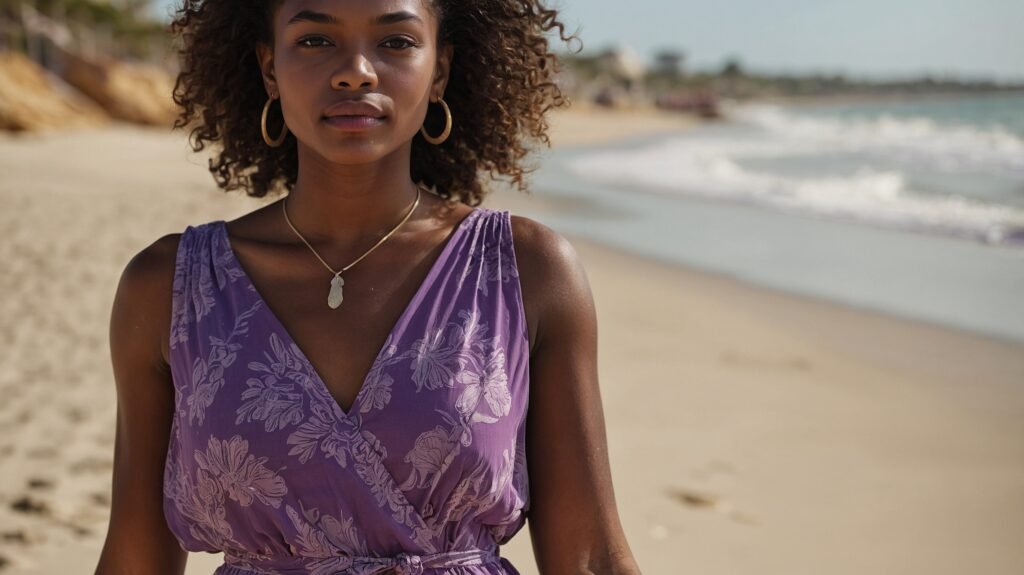
Practical Tips for Mixing and Matching Colors
Mixing and matching colors can be a fun and creative way to express your personal style. Here are some practical tips to help you create stylish and cohesive outfits.
Start with a Neutral Base
Starting with a neutral base can make it easier to mix and match different colors. Choose neutral pieces like black pants, white tops, or gray skirts, and then add colorful accessories or layers. For example, you might pair a white blouse with black trousers and add a colorful scarf or statement necklace.
Use the Rule of Three
The Rule of Three is a simple guideline for creating balanced and cohesive outfits. Choose three colors to incorporate into your outfit: a base color, a complementary color, and an accent color. For example, you might choose navy as your base color, mustard yellow as your complementary color, and burgundy as your accent color.
Experiment with Patterns
Patterns can be a great way to mix and match colors. Look for patterns that incorporate multiple colors and use them as a guide for creating your outfits. For example, if you have a floral skirt with shades of pink, green, and blue, you can choose tops and accessories in those colors to create a cohesive look.
Tips for Accessorizing with Color
Accessories are a great way to add color to your outfits and express your personal style. Here are some tips for choosing and styling colorful accessories.
Choosing the Right Accessories
When choosing accessories, consider the colors and styles that complement your outfit. Bright, bold accessories can add a pop of color to a neutral outfit, while more subdued accessories can enhance a colorful ensemble. For example, a red handbag can add a touch of excitement to a black dress, while a gold necklace can complement a navy blouse.
Balancing Colors
When accessorizing, it’s important to balance the colors in your outfit. Avoid using too many bold colors at once, as this can create a chaotic look. Instead, choose one or two key colors and use accessories to complement them. For example, if you’re wearing a bright yellow dress, you might choose neutral accessories like beige shoes and a white handbag.
Seasonal Accessories
Just like clothing, accessories can change with the seasons. Choose accessories that reflect the colors and trends of the current season to keep your outfits fresh and stylish. For example, in the spring, you might choose floral scarves and pastel handbags, while in the fall, you might opt for earth-toned boots and cozy knit hats.
Color and Personal Expression
Colors are a powerful tool for personal expression. By choosing colors that reflect your personality and mood, you can create outfits that are uniquely you.
Finding Your Signature Color
Your signature color is a color that you love and feel great in. It can become a key part of your personal style and help you feel confident and comfortable. Experiment with different colors to find your signature hue, and then incorporate it into your wardrobe. For example, if you love the way you look in teal, you might choose teal tops, dresses, and accessories to create a cohesive and stylish look.
Expressing Your Mood
Colors can also be a way to express your mood and emotions. If you’re feeling happy and energetic, you might choose bright, cheerful colors like yellow or orange. If you’re feeling calm and relaxed, you might opt for soft, soothing colors like blue or lavender. Use colors to reflect your mood and create outfits that make you feel good.
Telling Your Story
Your clothing choices can tell a story about who you are and what you value. By choosing colors that reflect your personality and interests, you can create a wardrobe that is uniquely you. For example, if you love nature, you might choose earthy tones like green and brown. If you’re passionate about art, you might opt for bold, vibrant colors like red and purple.
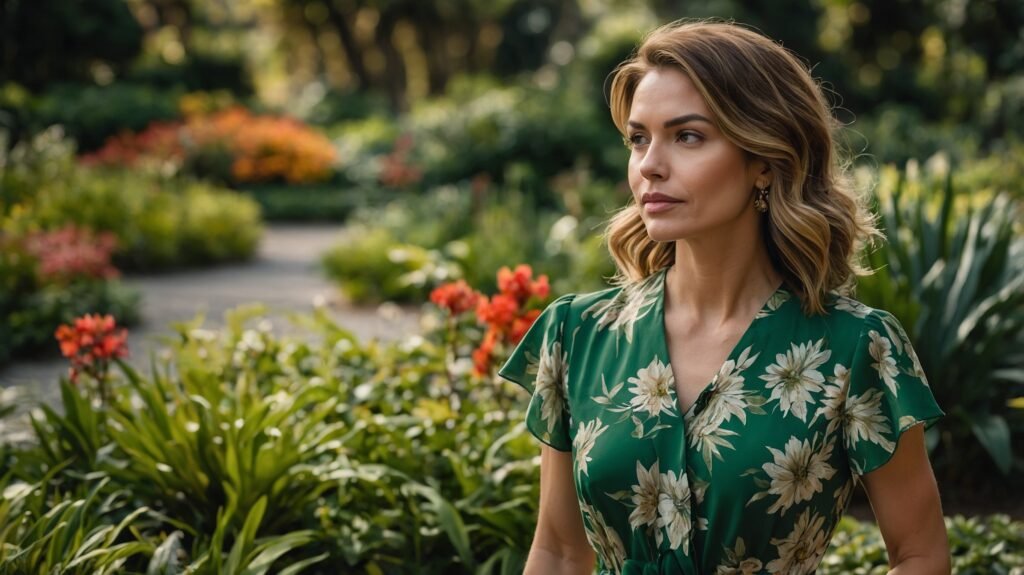
The Future of Color in Fashion
As fashion continues to evolve, so do color trends and the ways we use colors in our clothing. Here are some trends to watch out for in the future of color in fashion.
Sustainable Fashion
Sustainable fashion is becoming increasingly important, and this trend is influencing color choices. Natural, eco-friendly dyes and earthy tones are becoming more popular as consumers look for sustainable and ethical fashion options. For example, you might choose clothing made from organic cotton dyed with natural pigments.
Technology and Color
Advances in technology are also impacting color trends. Digital printing and new dyeing techniques are allowing for more vibrant and unique color options. For example, you might see clothing with digital prints in colors that were previously impossible to achieve with traditional dyeing methods.
Personalized Fashion
Personalized fashion is another emerging trend, with consumers looking for unique and customized clothing options. This trend is allowing for more freedom and creativity in color choices, as people can choose colors that reflect their individual style and preferences. For example, you might order a custom-made dress in your favorite shade of blue or a pair of shoes in a unique color combination.
Summary Table
| Section | Key Points | Examples |
|---|---|---|
| The Power of Colors in Fashion | Psychological impact, cultural significance, seasonal trends | Red for passion, blue for calmness, white for purity |
| Choosing the Right Colors for Your Skin Tone | Identifying skin tone, best colors for warm, cool, neutral tones | Warm: mustard yellow, Cool: sapphire blue, Neutral: blush pink |
| Pairing Colors Effectively | Color wheel, complementary colors, analogous colors | Royal blue with burnt orange, teal with mint green |
| Building a Versatile Wardrobe with Color | Importance of neutrals, adding pops of color, seasonal swaps | Black blazer, red coat, pastel trench coat |
| Practical Tips for Everyday Color Choices | Dressing for work, casual outfits, special occasions | Navy suit, coral t-shirt, royal blue gown |
| Color and Mood | Calming effect of blue, energizing effect of red, cheerful effect of yellow | Light blue dress, red blazer, yellow sundress |
| Building Confidence with Color | Dressing for body shape, experimenting with new colors, dressing for success | Dark skirt with light top, colorful accessories |
| Color Trends to Watch Out For | Pantone Color of the Year, seasonal trends, celebrity style | Coral dress, pastel shades, yellow dress |
| Practical Tips for Mixing and Matching Colors | Neutral base, Rule of Three, experimenting with patterns | White blouse, navy trousers, floral skirt |
| Tips for Accessorizing with Color | Choosing the right accessories, balancing colors, seasonal accessories | Red handbag, beige shoes, floral scarves |
| Color and Personal Expression | Finding your signature color, expressing your mood, telling your story | Teal tops, bright yellow dress, earthy tones |
Conclusion
Colors are more than just visual elements in our clothing; they are powerful tools for self
-expression, mood enhancement, and personal style. By understanding the impact of colors and how to use them effectively, you can create a wardrobe that not only looks great but also makes you feel confident and comfortable. Whether you’re choosing colors for your skin tone, experimenting with new hues, or staying on top of the latest trends, the right colors can transform your fashion choices and elevate your style.
Embrace the power of colors and let them guide you in creating outfits that reflect your unique personality and taste. Remember, fashion is a form of self-expression, and the colors you choose are a key part of telling your story. So go ahead, explore the world of colors, and discover the endless possibilities they offer for enhancing your wardrobe and your life.
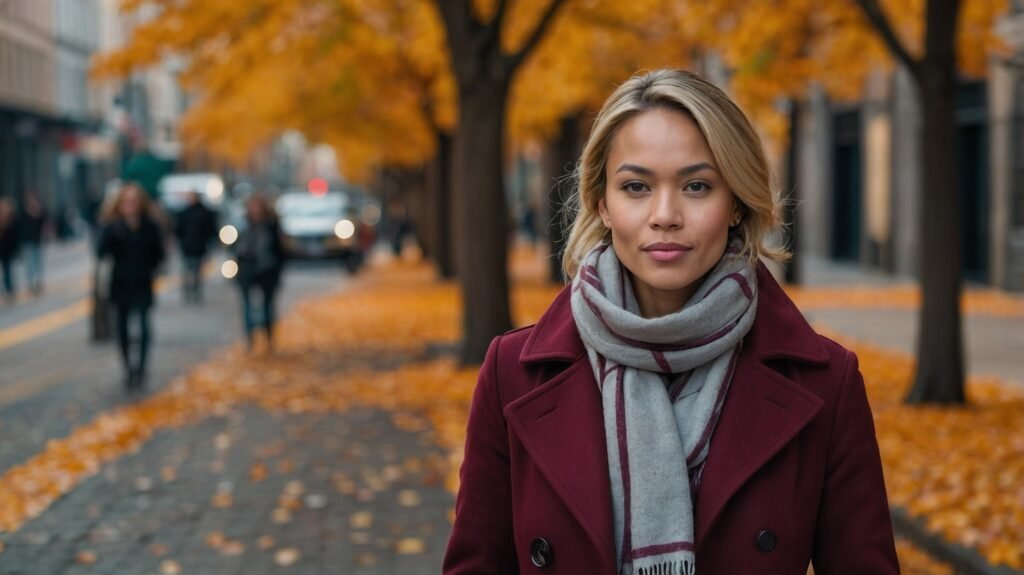
Frequently Asked Questions
How do I find my signature color?
Experiment with different colors to see which ones make you feel confident and comfortable. Your signature color should be a hue that you love and feel great in.
What are the best colors for work attire?
Neutral colors like black, navy, and gray are great for work attire, as they convey professionalism and confidence. You can add pops of color with accessories or layers.
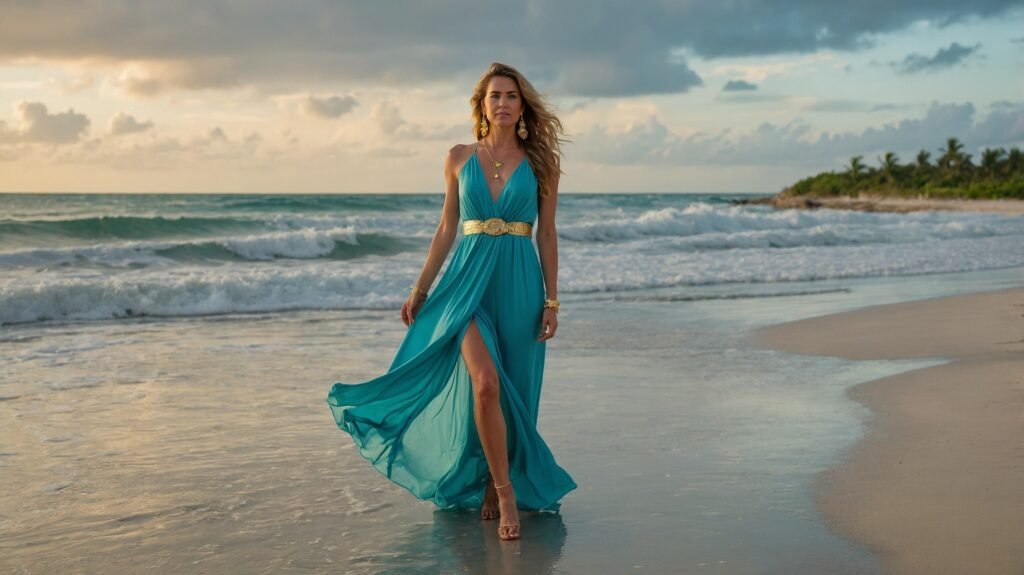
How can I mix and match colors without clashing?
Start with a neutral base and use the Rule of Three: choose a base color, a complementary color, and an accent color. Experiment with patterns that incorporate multiple colors for a cohesive look.
What colors should I avoid if I have a cool skin tone?
If you have a cool skin tone, you might want to avoid warm colors like mustard yellow and olive green. Instead, opt for cool colors like sapphire blue and emerald green.
How can I stay on top of color trends?
Pay attention to fashion magazines, blogs, and runway shows to see what colors are trending each season. You can also keep an eye on the Pantone Color of the Year and celebrity styles.
How do I choose the right accessories for my outfit?
Consider the colors and styles that complement your outfit. Bright, bold accessories can add a pop of color to a neutral outfit, while more subdued accessories can enhance a colorful ensemble.
What are some sustainable fashion options for color?
Look for clothing made from organic materials and dyed with natural, eco-friendly pigments. Earthy tones and natural dyes are becoming more popular in sustainable fashion.
How can colors enhance my mood?
Colors can have a powerful impact on your mood. For example, blue can create a calming effect, while red can boost your energy. Choose colors that reflect and enhance your current mood for a positive impact on your day.
Feel free to explore the world of colors and experiment with different hues to find what works best for you. Fashion is all about expressing your unique personality, and the right colors can help you do just that. Happy styling!
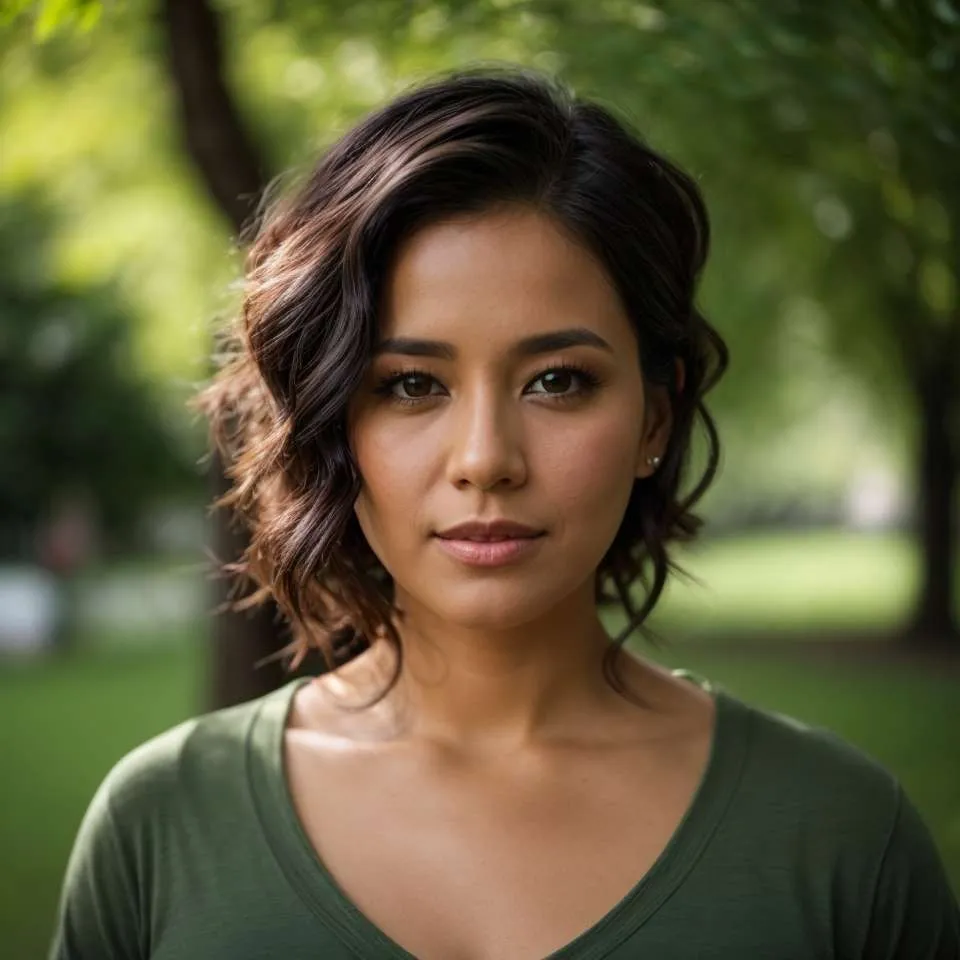
Joanna Perez, with a degree in Creative Writing, excels in recommending distinctive clothing color mixes and trends that deeply connect with readers. She simplifies the often daunting task of color selection, making fashion decisions more personalized and impactful. Her passion for vibrant color palettes and the stories they tell makes her an indispensable voice in the fashion community.
Reviewed By: Marcella Raskin and Anna West
Edited By: Lenny Terra
Fact Checked By: Sam Goldman
Photos Taken or Curated By: Matthew Mansour
